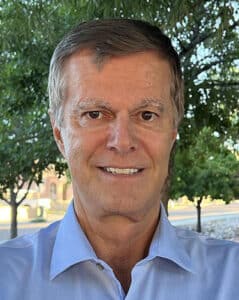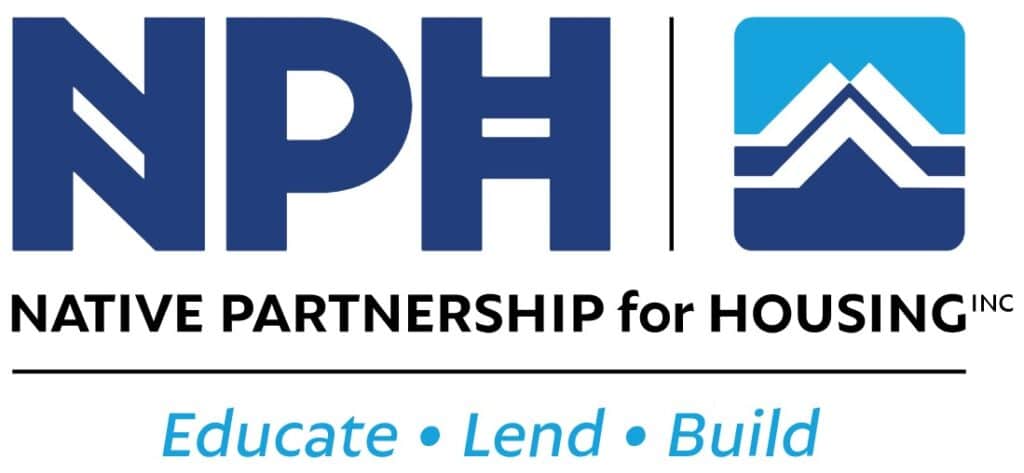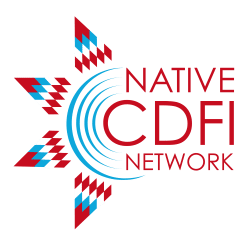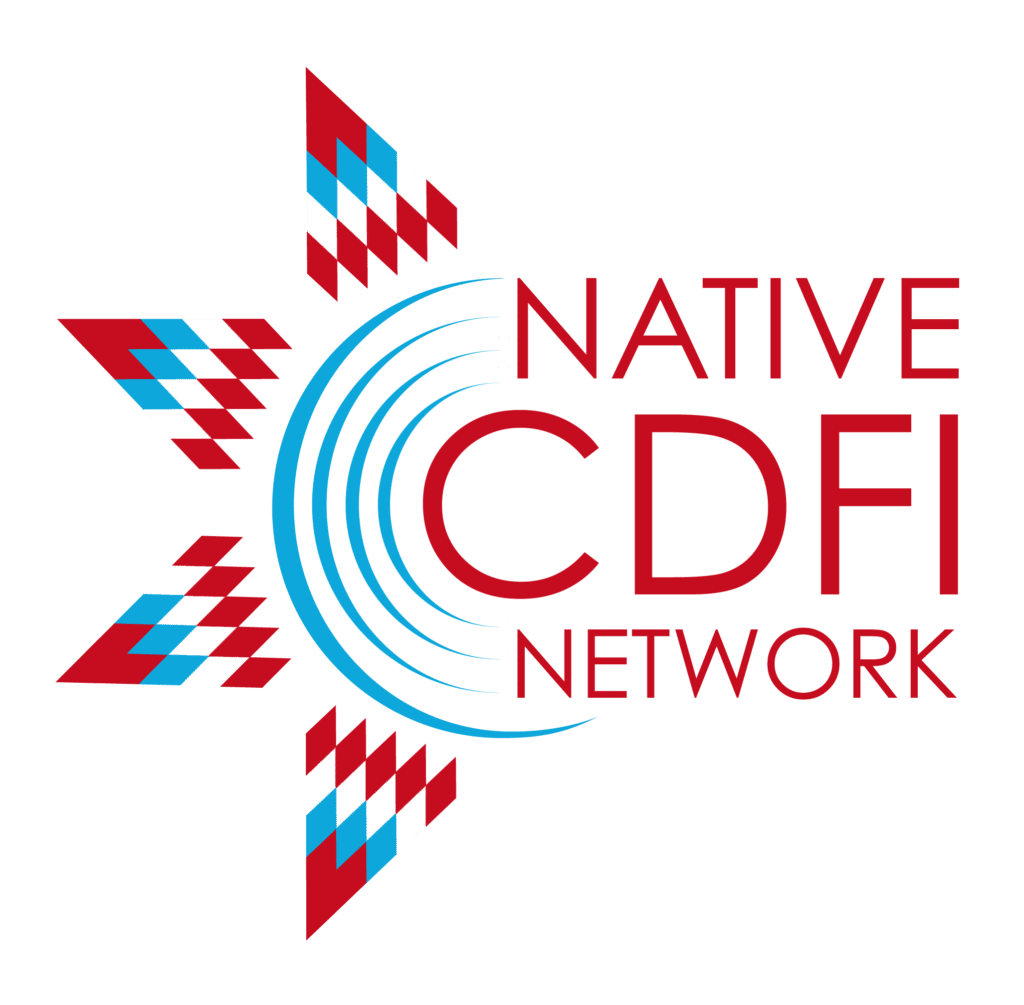
An enrolled member of the Cherokee Nation, Wood joined NPH in 2014 and led implementation of its five-year strategic plan that included leveraging NPH’s Housing Development Line of Business to reduce its dependency on federal grants and increase its self-sufficiency. He also helped NPH form two successful C Corporation subsidiaries, one a holding company and the other a construction firm, to enhance the Partnership’s impact.
In this wide-ranging conversation with NCN, Rollin shares how NPH is addressing the housing and homeownership needs of Native people, with a particular focus on building and financing homes for middle-class professionals to live and work in their Native communities.
NCN: Greetings Rollin, it’s good to have you with us today. Welcome.
Wood: It’s great to be here, and I look forward to our dialogue.
NCN: Why do you do what you do? How did leading the Native Partnership for Housing become your life’s calling?
Wood: I didn’t know anything about Native CDFIs. The job found me. I didn’t find it. When presented with the opportunity, I decided to make a career pivot, but I had to learn a lot about Native CDFIs. What I came to understand was that good business practices will translate from one industry to another, as long as you have an open dialogue with your staff and are willing to engage and learn on a daily basis. I’m here to contribute to NPH’s longstanding and extraordinary commitment to provide relevant, impactful services to Native Americans, who are among the most underserved populations in our country. That’s my calling – to grow this company’s legacy.
NCN: As you know, there are more than 70 federally certified Native CDFIs across the country and many more “emerging” CDFIs following in their footsteps. Why did Native communities feel it necessary to create CDFIs, and what fundamental role do they play?
“NPH has provided homebuyer education and financial fitness trainings to nearly 5,000 people and facilitated over $78 million in home mortgage loans…The homes we build, if they were outside reservation boundaries, we’ve had realtors tell us those same homes would go for about $250,000 to $300,000 more, so we’re providing high-quality homes at the most reasonable price.”
Wood: You have to be part of the community to understand the needs and come up with creative solutions. You must have people embedded in the community. If you don’t, you’re guessing. If you’ve been on one reservation, you’ve been on only one reservation. Then you have the reservation needs and the needs of Natives in urban environments, and often urban Natives have greater needs because they’re totally removed from their community. And then some reservations in urban areas like Phoenix, Arizona have access to jobs and opportunities that Navajo and Hopi and some of the Apache tribes do not have. We need to be cognizant of that. We have different needs, but we also have more in common than we have differences. As we work our way through that in a respectful fashion, how do we come up with a creative solution and marry the funding sources one to another? How do we address the radical differences in the cost of construction of a home? How do we attract partners to work on trust land? How do we work with somebody who’s working on fee land within the boundaries of a nation? These are issues that require a 24-7 commitment to come up with creative solutions.
NCN: What do policymakers, philanthropy, banking institutions, and the general public who aren’t familiar with Native CDFIs need to understand about them and the difference they make?
Wood: I encounter this every day. There are a lot of preconceived notions – if you’re Native, then the BIA [Bureau of Indian Affairs] is giving you a check every month. The federal government’s taking care of you. You have free housing, you have free school, you get a paycheck. You’re basically a ward of the government. That’s pretty insulting. The naivete is more common than not. The thought that, “We’ll provide you funds for constructing homes, but they have to be 80% under AMI [Area Median Income]. Well, when you’re in persistent poverty counties, 80% AMI is $37,000 a year. You’re barely able to put food on the table, let alone purchase a home. If there’s a broken window, you’re not going to be able to repair it. There are many embedded opinions that are difficult to navigate. We need to eliminate the AMI restrictions altogether. Because culturally, if you have a good job and you’re making 300-400% of AMI, you’re taking care of your family. You’re taking care of your brothers, your sisters, your parents – you can be taking care of three or four generations because that’s the right thing to do. It’s being a decent human being and a member of the family. What does that mean? It means you have no money to make a down payment. It means you may have co-signed for a car and the person you co-signed for fell on hard times, which has damaged your credit. We need to eliminate these constraints, because many of the homes we’re constructing are for two, three, even four generations. Those people have the ability and should not be prevented from having a good home. Some say we build homes that are too nice for the reservation. You mean if you’re Native, you should be living in an overcrowded home with minimal facilities? These challenges we work every day to overcome.

NCN: Tell us more about NPH. According to your website, “we are in the financial education, mortgage lending, and construction business, but we are really in the business of building resilient and self-reliant communities.” What does this look like in practice?
Wood: NPH was formed on the Navajo Nation at its request to attract mortgage capital and, in turn, middle-class jobs through middle-class housing. The Navajo Division of Economic Development, Federal Home Loan Bank of Chicago, and NeighborWorks America were instrumental in this process. The tribal housing authorities were taking care of the under 80% AMI folks, but there was a need to attract Navajos who were working and going to school elsewhere, to overcome the dynamic of, “We’d love to have you back, but unfortunately you can’t live here. You have to commute because you can’t live in tribal housing. You make too much money.” Here was a situation where somebody who’s market rate was not welcome. NPH was formed to address that need.
Since its inception, NPH has provided homebuyer education and financial fitness trainings to nearly 5,000 people and facilitated over $78 million in home mortgage loans. We provide small business loans, credit repair loans, and debt consolidation. Many of our clients have been subject to predatory lenders charging 90% to even as high as 400%. By consolidating up to 8-9 loans into one, we’re saving individuals upwards of $800 to $1,200 dollars a month. Now they can thrive again. They’re not simply working to pay off predatory lenders they’ve been under the yoke of.
In addition, the homes we build, if they were outside reservation boundaries, we’ve had realtors tell us those same homes would go for about $250,000 to $300,000 more, so we’re providing high-quality homes at the most reasonable price.
NCN: One of the challenges the Partnership encountered in growing Native homeownership was a lack of access to local, reliable, quality home builders. In response, it created the subsidiary Clear Water Construction Partners. Can you explain more about why the Partnership felt it necessary to take this step?
 A Clear Water Construction Partners crew lays the foundation for a new home. (Courtesy: Native Partnership for Housing)
A Clear Water Construction Partners crew lays the foundation for a new home. (Courtesy: Native Partnership for Housing)Wood: There are less than a handful of contractors around the Navajo Nation, and most of those are involved in commercial construction. Only a couple can do small-scale residential, and they’ll work for the housing authorities doing large volumes whenever those are available. Those contractors were coming to NPH and because we weren’t building 20 homes at a time, the markup per home was significant. No organization could accept that markup and survive to fulfill its mission, so we ended up using outside companies, and they would often bring in subcontractors from elsewhere who were not Native and not contributing to the community. One day after they got in trouble for not having Navajo employees, they came to me and said, “Let’s go to the job site. We want to show you our Native employees.” The issue was they were not Native. Instead of saying, “Yá’át’ééh,” they were saying, “Buenos dias.” So what we’ve done with Clear Water is 100% of our crew is Native, and virtually all of them are enrolled members of the Navajo Nation. We are adamant about making sure our employees represent the Native community they come from.
NCN: The Partnership has helped a great number of people. Is there an individual client success story that really sticks out to you, that really inspires you?
Wood: The Navajo Division of Economic Development formed Karigan Estates over 20 years ago. It wanted to create a community that would attract and provide housing to professionals so they didn’t have to commute great distances to do their jobs, that would be a magnet to come back. Other builders tried to get involved early on, but it’s very extremely difficult to work in that environment because of the great distances. It takes us 6-12 hours to get materials that would take someone in Phoenix an hour, two hours maximum. That drives up costs significantly. In building Karigan, we brought in the mother, who provided a safe home for the grandmother and the single daughter with her children. You don’t have ten people living in a two-bedroom home, which is not uncommon, and unfortunately COVID really brought that overcrowding to light. When you provide a home with appropriate distancing within the family, if somebody gets sick, there is quality ventilation and functional kitchen and sanitation facilities. That goes a long way. I would like to see that for every member of every Native community. That’s the satisfaction we get when we hand the single mother her keys – she brings her grandmother, she brings her brother, the grandmother goes to the sink and turns the water on and off in amazement because she’d never been in a home with running water. She had lived in a home where water was brought in and put in a cistern and gravity fed. Oftentimes the water is poured into a bucket to be carried into the home. But how do you know if that water is clean or contaminated? You don’t. Providing a safe home is a huge source of pride for us and also the people living there. It creates a sense of community and a safe environment for their children to grow up in.
NCN: From your perspective, what do Native CDFIs like yours need to realize their full potential? What support do they need to achieve their missions and maximize their impact?
Wood: Capital. It’s the magnet to attract talented people, train them, and retain them. It’s the ability to staff up to the level necessary to meet the requirements placed on us by auditors, because if we receive federal capital, then we have to go through a federal audit. Unfortunately, from my perspective, most of us are always operating with far less capital than we need to function. If we’re going to provide our services, the money is going to taking care of the people and not be for our own company’s benefit. This is particularly true for mortgage lending for homes because it’s a very capital-intensive application, the interest rates are lower than you receive for personal loans or for business loans. The argument could be that personal loans and business loans are higher risk, you can’t collateralize them, but if you do it right and you measure the character of the person you’re lending to, the default rate is minimal. It’s very difficult to grow the organization if you don’t have capital that has great impact. For whatever reason, there can be a stigma. I can’t tell you how many times I’ve heard people say, “You’re building something on the reservation, you should be able to do it for half the price that it would cost anywhere else.” Well, in fact, it’s probably a 40-60% greater cost because of time and distance. There are no building materials available locally, and if you contract the delivery, it can cost you $1,000 to $1,200, so we buy our own vehicles to transport the materials to save the company money.
Native CDFIs need capital because the criteria, the stringent reviews are greater than they are for a for-profit company working in Phoenix or Denver. If we were there, we could do twice the work for the same amount of money, maybe even more. Because as soon as you get involved with federal capital, you’re highly scrutinized. It seems like you’re always in review, you’re being audited. Ten out of 12 months each year, somebody is scrutinizing every move you make. We just need to get over that hump to be able to get enough capital flowing so we can staff up, so instead of five people doing the work of 15, we’d have seven or eight people doing that work. That is going to lighten the load. You’re going to reduce your turnover and the burnout where people say, “This is not worth it. I can work for a for-profit company elsewhere or go work for the tribe. I may not make more money, but at least it’ll be less stressful.”
To learn more about the Native Partnership for Housing, please click here.

